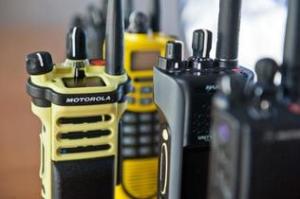Millions in Federal Emergency Communications Funding Lost, Diverted.-Two Way Radios
About four years ago, Commerce Department officials began a grant company to bring police, fire fighters, and other emergency responders up to date on their broadband communication program. With the initial seven grant awards proposed, public safety agencies could use this new data system to increase efficiency and effectiveness. For example, with this high speed system, police could send a suspect’s image to every officer on patrol, or stream life-saving video instructions to a medic helping a disaster victim.
This new system sounds pretty great, right? There’s just one problem, the public safety broadband communication program is in complete and utter chaos. Tens of millions of dollars originally supposed to go to this project were lost or diverted to other projects while a new agency, the National Telecommunications and Information Administration (NTIA), is setting out to build a nationwide broadband network.
About two-thirds of the $382 million in public safety grant money ended up going to start up projects by the Illinois-based company, Motorola® Solutions Inc. Motorola also dominates about eighty percent of the emergency two way radio market. coincidentally, it was Motorola who pushed for a more competitive broadband network as an idea to build a new network, which is exactly what the NTIA is seeking to do.
In fact, Motorola was backed by the NTIA to create the first broadband safety system in for the metropolitan bay area of San Francisco as well as the first statewide safety system for Mississippi. Most recently, Motorola received the go-ahead for a $175 million contract for a 230-tower network in Los Angeles.
However, these grants have been put on hold for Motorola. The $70 million grant for Mississippi and the $50 million grant for the San Francisco bay area were scratched while the $154 million Los Angeles is in jeopardy. The government delays have also prevented a large fourth deal in the city of Charlotte, North Carolina from taking off.
The trouble with trying to create a broadband system is the ongoing struggle of getting local, state, and federal agencies to organize both money and policies behind emergency communication networks. It also brings to light Motorola’s fight to get one foot in the door of the broadband world, a technology that threatens the company’s old market of push-to-talk radios. An official from the Department of Homeland Security went on record stating that lobbyists for Motorola pushed and persuaded Congress to get the ball rolling for public safety broadband grants. Essentially, Motorola anticipates their radios becoming obsolete and they are taking the opportunity to corner the market on broadband technology.
Evidence of Motorola including proprietary features in their equipment forcing customers to upgrade equipment or ditch entire systems from other vendors because non-Motorola equipment will not work with Motorola equipment was found in the San Francisco and Mississippi projects. When those stories were leaked, a representative from Motorola declined to comment on the situation. Shortly after, the San Francisco and Mississippi project’s grant money was pulled by federal officials.
As of May 2012, all seven of the original grant projects were put on hold by the National Telecommunications and Information Administration. For now the emergency communication systems and two way radios continue on, in chaos. However, experts believe that the technology for transmitting voice communications with the reliability required for public safety specifications will be here shortly. Experts also estimate by the year 2020, Motorola may have to compete with bigger and more established carriers such as AT&T, Verizon, and Sprint.
For more information on this subject check out: http://www.sacbee.com/2014/07/14/6555150/millions-in-federal-emergency.html

No comments:
Post a Comment